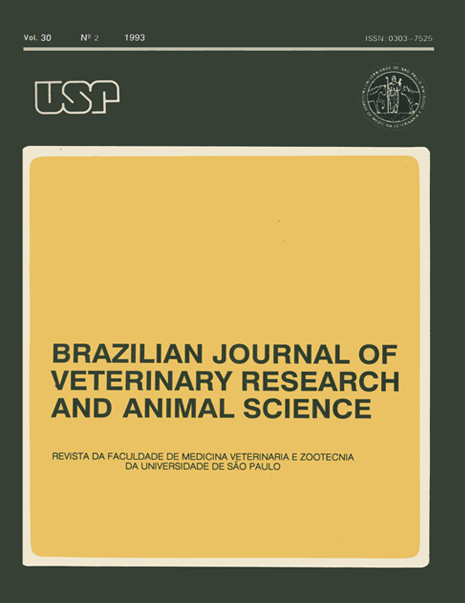Efficiency test for foot and mouth disease vaccines. I. Reduction in C index variation by increasing the number of guinea pigs (Cavia cavia)
DOI:
https://doi.org/10.11606/issn.1678-4456.bjvras.19932.52025Keywords:
Foot and mouth disease vaccine, C Index, Guinea pigsAbstract
Two foot and mouth disease vaccines were submitted to the “C Index” efficiency test with six replicates each using four guinea pigs per viral dilution for titration. The values obtained, when transformed into quality of the vaccine, demonstrated that the same vaccine could be scored as “rejected regular”, “approved good” or “approved very good”, indicating that the random variation in the results may prevent a classification of the immunogen. To determine whether these variations are due to the small number of guinea pigs used, one vaccine was submitted to six replicates using five guinea pigs per viral dilution in the “C Index” test. Analyses of the results using 2 by 2, 3 by 3, 4 by 4 and 5 by 5 arrangements from the data corresponding to all possible combinations when 5, 10, 20, 25 or 30 guinea pigs were used per viral dilution demonstrated that the plus or minus (±) 0.5 log10 variation with 95% confidence limits corresponds to 15 guinea pigs.Downloads
Downloads
Published
1993-12-02
Issue
Section
PREVENTIVE VETERINARY MEDICINE
License
The journal content is authorized under the Creative Commons BY-NC-SA license (summary of the license: https://
How to Cite
1.
Gonçalves EI, Pinto AA. Efficiency test for foot and mouth disease vaccines. I. Reduction in C index variation by increasing the number of guinea pigs (Cavia cavia). Braz. J. Vet. Res. Anim. Sci. [Internet]. 1993 Dec. 2 [cited 2025 Apr. 5];30(2):137-40. Available from: https://revistas.usp.br/bjvras/article/view/52025





